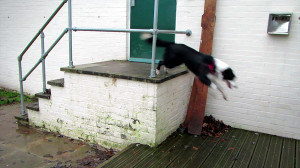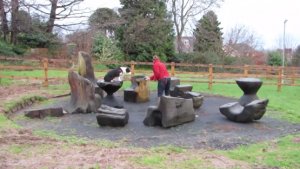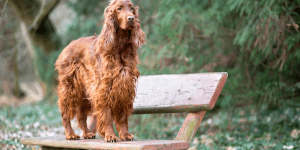Canine Urban Agility.
Although not well known in the U.K, canine urban agility, or canine parkour, is a well known concept in the U.S and other countries. The idea certainly presents some exciting opportunities for more fun on dog walks, especially for those living in suburban areas. This Holidays 4 Dogs article will take a look at this non-competitive recreational activity and provides some ideas on how to get started.
Some days, we may feel that dog walking is a bit of a chore. Walking the same routes all the time can end up being boring for us and our dogs. Canine urban agility, however, can definitely mix things up a bit, depending on where you live.
As with all canine sporting activities involving jumping, or high impact exercise, always begin slowly. Any dog less than 18 months old should not engage in physically challenging exercise.
Before beginning any new exercise regime, it may be worth getting your vet to check your dog over; just to make sure he is fit and healthy.
Urban agility, follows similar principles to traditional competitive agility, commonly seen on Crufts.
However, instead of a set course, handlers can find objects and obstacles in the urban environment.
Whether traditional agility, or urban canine agility, dogs become totally focused on their owners, while clearly having fun at the same time.
Like many canine activities that go beyond the realms of simply walking, you become much more of a focus to your dog. Canine urban agility also builds trust and and encourages the development of a strong bond between dog and owner. In addition, incorporating agility into your daily walks means you are working your dog’s mind as well as his body. You will certainly have a tired and content dog by the end of it!
How to begin.
Like any new training exercise – start small. Some dogs may require more motivation than others. Clicker training is an ideal method. Use small and very tasty pieces of food, such as liver, or cheese. It is best if your dog is quite good at following the sit, stand, wait and down commands. If he’s not too good with these – practice on solid ground before you start.
Important tip: All urban agility can be done on the lead. Indeed, it would be unwise to let your dog off the lead unless he will instantly recall under distraction. In many local authorities, dogs are not allowed to be off lead in urban areas. A dog must be on a lead on footpaths, or roads everywhere.
Safety first.
It goes without saying that urban agility takes place in urban spaces. You are likely to be amongst people and possibly near traffic – (see the above important tip). Of course, it is possible to find quieter more rural places using the natural environment such as logs, or tree stumps.
It is also a sensible idea to use a harness so that you can help steady your dog, especially in the early stages. An ordinary walking harness will do.
Types of obstacle for canine urban agility;-
Kerbs, or very low walls, are a good place to start.
Encourage your dog to balance and then walk along using food as a reward. Have a go at getting your dog to sit, stand and lie down on the wall. If it is wide enough ask him to turn round to the left and the right. Next, move on to ledges, pillars or curved kerb-sides. In time, you will be able to get your dog to confidently trot along a low wall and then turn around and go the other way without jumping off.
Benches.
Another good obstacle. If there are several benches close together, you can teach your dog to jump from one to the other. You can practice getting him to sit, lie down, or turn around on the bench.
Important tip: don’t use benches if your dog is muddy, or they are being used by other people!
Steps.
Teach him to come down a flight of steps slowly, one by one, stopping on each step. You could even teach him to walk backwards up the steps, or run along the length of one step, asking him to sit or lie down.
There is no need to rush with canine urban agility. The idea is to maintain control and balance rather than speed, normally associated with traditional competitive agility. You can build in a little more pace if you want, but only once your dog has really got the hang of it and is confident negotiating obstacles you have practiced on.
Metal railings, posts and bicycle racks.
These make good obstacles for weaving in and out of. If you can find a length of railing with good space between the posts you can use them like traditional agility weave poles. Lure your dog through in a weaving motion. The ‘U’ shaped bicycle racks can be used to weave a figure of eight.
Bollards.
These obstacles can be fun too. You could get your dog to stand on his back legs with his front paws on the top of the bollard. Perhaps even teach him to shuffle his back legs around, so he moves in a circle. You could get him to jump over bollards, or weave around them if there a few in a row. For wider flat topped bollards and low pillars, practice getting your dog to jump up and sit on the top.
For any obstacle, be near enough to catch your dog if he stumbles, especially when you first start. This is why your dog should always be on a lead and harness. Don’t start with anything too difficult, otherwise your dog may lose confidence.
Walls and ledges.
As you progress, and for extra difficulty, you could try using curved topped walls. Ledges, alcoves and tall planters can also be utilised. Get your dog to jump on and off, sit, stand and down. For lower walls and ledges, teach him to just put his front paws down on the ground keeping his back legs on the obstacle.
Benefits of urban agility;
Canine urban agility can provide so many benefits to dogs. It’s an ideal activity if you are not interested in competitive group sports, but still enjoy teaching your dog new and interesting things. Joining a local agility training club (many offer short courses), will help you get to grips with how to teach your dog various moves in a formal setting. It’s great exercise and can be adapted to make it easy, or more challenging, depending on the dog.
will help you get to grips with how to teach your dog various moves in a formal setting. It’s great exercise and can be adapted to make it easy, or more challenging, depending on the dog.
If you have trouble with your dog not coming when called, encouraging your dog to focus on you can help with recall issues. If your dog pulls on the lead, urban agility can often help with this too.
Once he has learnt that obstacles are a source of fun, but that he must concentrate on you for instructions, he will be more inclined to be focused on you rather than surging forward.
Canine urban agility is also great for nervous dogs and dogs afraid of new and novel situations, or environments.
By building up very slowly and introducing new things carefully, you can teach a nervous dog that the big wide world isn’t so scary after all. By boosting the nervous dog’s confidence using treats, he will learn that new objects, or environments, are places he can interact with to earn rewards. This should encourage him to be more confident long term.
Conclusion.
Before you begin such creative walks, do take into account your dogs capabilities and limits. Use your environment to provide fun but remember the aim is to keep control too. Young puppies should not be jumping, twisting, or engaging in high impact exercise, especially on hard surfaces.
Avoid allowing dogs to jump from surfaces which are too high, as this can impact on joints. Likewise, don’t use objects, or obstacles, that are unsteady, or hazardous.
Also, avoid offending other members of the public and don’t use children’s play equipment, or bench seats where people are sat. Be responsible and courteous at all times.
Canine urban agility is all about being inventive with your environment to provide fun for your dog – and you!
Next time you are walking in an urban area, look out for some obstacles that could change a monotonous walk into something a little more challenging and exciting!


